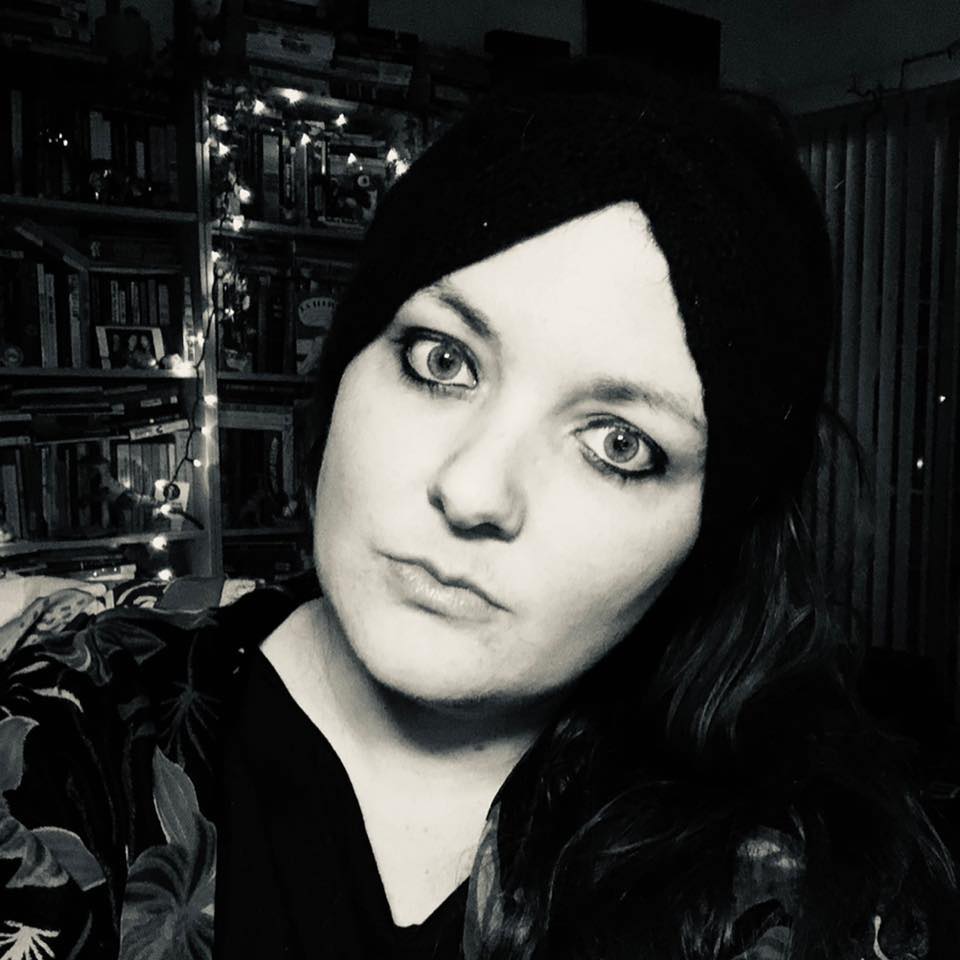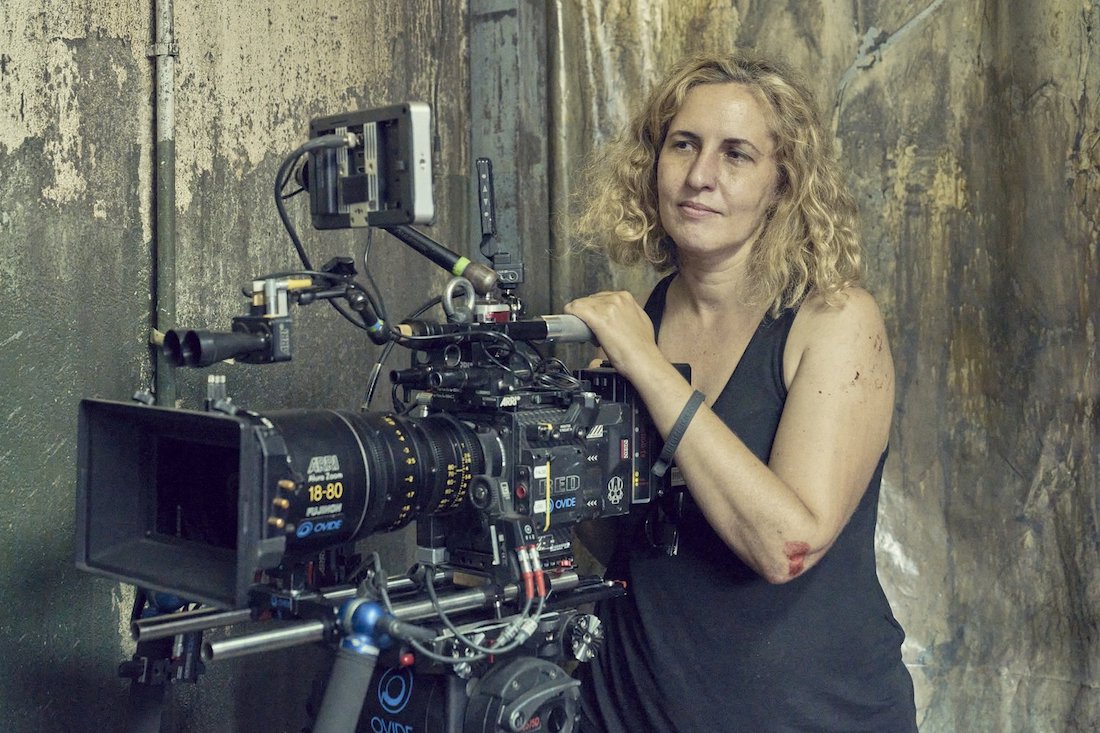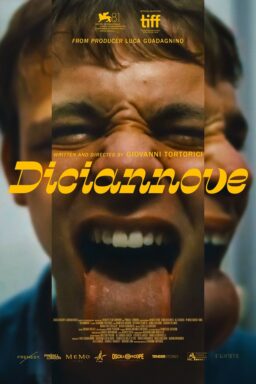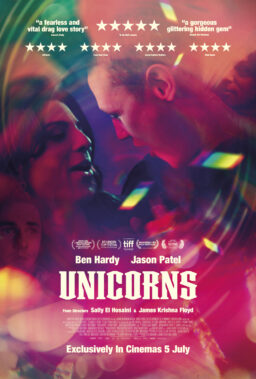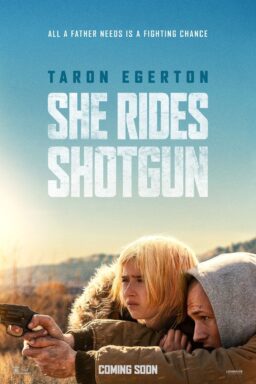Adapted from her Goya Award and Forqué Award-winning short film of the same, Carlota Pereda’s “Piggy” is an unflinching look at coming-of-age in the era of cyberbullying, wrapped inside a chilling slasher package. Featuring a star-making lead performance from Laura Galán, reprising her role from the short, Pereda’s gruesome film debuted in the Midnight section of this year’s Sundance Film Festival.
“Piggy” follows lonesome teen Sara (Galán) as she works in her parents’ butcher shop over the summer break. Because of her appearance and the occupation of her parents, she endures vicious bullying—both online and, violently, in person—from the village’s other teens. The appearance of a murderous stranger shakes the village to its core, and pushes Sara into a life-altering moral dilemma.
Shooting on location around the village of Villanueva de la Vera and in a tight Academy ratio, Pereda combines the psychological tortures of girlhood with the grisly violence of the slasher genre to examine who the real monsters are. “Piggy” subverts expectations for what vengeance can look like on screen.
For this month’s Female Filmmakers in Focus column RogerEbert.com spoke to Carlota Pereda via Zoom about matching a film’s form to its themes, finding inspiration in the human body, and the exciting class of female filmmakers coming out of Spain today.
The opening sequence in the butcher shop is so visceral with the visuals and the sounds. It’s so squishy, and the pig’s head staring at you. What were you hoping to instill in the viewers in that first sequence?
I wanted to have something that was very organic, and that has to do with the themes of the movie, and also that was disturbing, but disturbing from a natural way without having to delve into horror. Normally in horror movies the first thing you get is a killing or something like that. I wanted to be very realistic, but oddly perturbing. Also, my best friend grew up in a butcher shop, and the fact that you’re surrounded by all that it really marks you. I thought it had to do a lot with the theme of the movie.
What would you say is the overarching theme for you, that you hope viewers get from the film?
You know, that’s one of the questions that I’m not going to answer because I think the viewers should answer the question for themselves because the audience is one of the main characters in this movie. They’re always involved in the discussion. They’re always involved in the storytelling. If I answer the question, it’s like I killed the movie. A lot of directors nowadays, I feel like they discuss their movies like a disclaimer. They don’t want to be misunderstood. I don’t mind being misunderstood. I want people to think what they want of the movie, but make it their own.

I love that. Leaving it open to interpretation. For me, one of the themes that I noticed and that I felt was handled really well, was the juxtaposition between the online bullying that happens to Sara and the violent in-person bullying, and how they are sort of entrenched together. Because you see the Instagram post and you think, Oh, it’s just a picture, it’s fine. But then you see how that leads to more violent altercations that happen to her. Could you speak a bit about what led you to include specifically the Instagram bullying?
That’s one thing that changed from my days when I was bullied. Now they’re bullying continuously online, so there really is no safe space. You go home and the bully continues online and you’re basically surrounded by a world that becomes smaller and smaller. Of course, the internet also makes you able to connect with people that think like you, but it also can be dangerous too. And I thought that was very, very oppressive.
I loved the costuming on Sara, in particular the way that at the beginning of the film she’s often in a baby pink, a kind of flesh pink, and by the end obviously, I don’t want to spoil, but she’s in this rich dark red color. Could you discuss how her costumes sort of reflect her journey?
The whole movie is the arc of her character. We feel everything has to do with her arc. The way we shot the camera, the colors on the screen, the set design and the costumes of course. So you can say that at the beginning she is a child. So we thought, Arantxa Ezquerro, who is the costume designer, we discussed how Sara comes from a small village, and we discussed how there are no shops in small villages in Spain. You get what you can buy in the market, which comes once a week and that’s it. So she’s not able to go to Madrid to buy food or to buy clothes. She just buys the clothes that are available to her mother, who’s going to be the one who buys the clothes for her. There’s this the evolution of the character and the end and one of the main inspirations costume-wise at the end of the movie, for our costume designer was Lara Croft.
You mentioned the camera as well. Obviously it’s shot in the Academy ratio that is so tight on the characters at all times. What was the decision to film in that ratio?
It was because of that. Everything that had to do with the theme and form are linked. So I discussed that a lot with my DP Rita Noriega. First we used it in the short film, because of that, because it is more centered on the body, it is more claustrophobic. It reminds us of our childhood days. And of course the younger kids even it reminds them of Instagram as well. But I was a bit scared when we were making the movie, that maybe they’re gonna think that this gimmick. But then of course, Robert Eggers did it for “The Lighthouse” as well. And even Zack Snyder [with the Snyder Cut of “Justice League”] did it, so it’s no longer something that is going to really take the attention from the movie. Because I didn’t want the form to take the attention from the movie, because sometimes if the form is too out there, it can distract from what you want to say.
I’d love to talk about the sequence at night. Even though it’s so dark, you really are able to feel the panic of the mothers and the panic of Sara and the creepiness of the guy. Can you talk a bit about how you filmed that sequence?
It was tricky. I mean, literally, I really had to think about that. I like darkness, but I didn’t want to have a full moon. I wanted the darkness to be dark, a bit like the underwater scene in a sense, where anything could happen in this almost liquid darkness. So it was taxing on Rita because she really had to think about that. I’m also a very visual writer, and I like the idea where there was complete darkness but then there are sparks of color that will let you look at things, almost like this theory about what is going on.

Were there any visual inspirations for the way you shot the film?
Maisie Cousins, who is a photographer. She’s very organic and really centers on the body. Also Jenny Saville. She has a lot of work about bodies and what is considered a normal body and what isn’t. I love her work. It’s very, very political as well. And of course, “Who Can Kill a Child?” [directed by Narciso Ibáñez Serrador], which is a Spanish masterpiece, a horror film set in the summer in the 1970s. The French film “Stranger by the Lake” for the sound design. “Trouble Every Day” by Claire Denis and the way she speaks about the body and desire. And of course, “Texas Chain Saw Massacre,” which is a masterpiece and is clearly an inspiration. I just love that movie and think it’s the best horror movie ever.
I love that you can feel the inspiration of those horror movies, but you also subvert a lot of what you expect in a horror movie. The monster is this very silent person, but also maybe the only person who sees Sara for who she really is. It’s great that she’s both repelled by him, but also drawn to being at least acknowledged as a person. Could you discuss that tension?
I’ve always thought this movie was a horror movie, but it’s also coming of age–in the sense of a thriller. So, for me, it was like this obsession we have with that voice. But in this case, the bad boy is for real a bad boy. And how sometimes when you’re a teenager and you get noticed for the first time, sometimes your friends push you towards it, you know, “hook up with him, hook up with him,” even though he may not be good for you, just because he did notice you. I wanted the audience to have that experience. Like, say, “Oh, he’s so kind. He sees you.” Yeah, but he’s not good for her! Come on.
Yeah, the first time I watched the film, I definitely was like, maybe they’ll be together in the end. Maybe it’ll be good. And then I was like, No, I shouldn’t be thinking this. This guy’s murdering people, he decapitated that guy at the pool! But you do a really good job of making the viewer almost want it to work because you almost only see the good stuff. I love that. Could you talk about casting Laura Galán as Sara?
It took me two years to find her for the short film. I saw every single actress in the world I think, in Spain at least. And once I found her I was not gonna let her go. We had to postpone starting the feature because of COVID, and she was like “I’m not getting any younger! We have to shoot now.” And I said, don’t worry, we’re gonna make it work. I didn’t let her pluck her eyebrows for a whole year, so she would look younger. When we finished shooting, she said, no reshoots because I’m going to pluck my eyebrows! Luckily, there were no reshoots.
For the rest of the cast, Carmen Machi as the mother was always gonna be her. She embodies the tone of the movie. She manages comedy and drama and horror at the same time. She’s just brilliant. The rest of the cast was due to the help of my casting director. One fun fact is that Richard Holmes, he didn’t audition for the killer, he auditioned for the cop. I saw something in him that I said to my casting director, “Do you think people could put on weight?” And she said, yes. She called him and he put on 30 kilos for the movie.
Earlier you mentioned the work of Jenny Saville’s art, and the exploration of what is a “normal” body and what is a “desirable” body. Could you speak to making a film starring a woman who, to Hollywood standards has a larger body, and the struggle to have these normal people’s bodies just shown on film, and what your intentions were?
For me, everything is political and the view is political and the fact that we get struck by seeing a girl in a bikini just because has some weight says a lot about us, as viewers. And for me, it was important for the viewer to ask why do you say she’s brave, just because she is in a bikini? It was important to show the body as it is without hiding everything, because it’s beautiful, and to paint the fact that the audience will see this body first as a cage. Then we will see that it’s actually a weapon, a very, very powerful weapon, and she’s empowered in it and she’s in control of it.
For me, as a woman, it always really interests me the way we show ourselves in the world is being forced on us since we’re really, really small kids. The first thing you hear about yourself when your kid is if you’re beautiful or not when you’re a really small kid. That always made me pause and think about that.
I thought it was interesting the way that she’s hearing negative things from her friends, from her parents, from pretty much everyone involved, and then she internalizes it. There’s this line where she says “I was scared. I do everything wrong.” I don’t want to spoil it, but it’s in regards to a very important decision she makes, but it’s also reflective of how she feels about every choice she makes.
For me, that’s the whole point of being a teenager, you feel you don’t know who you are. You just feel that you’re making mistakes all the time, especially if you don’t have any reinforcement from your surroundings. I thought that was exactly what she would say at that moment.
It resonated and felt very realistic. I am now like 20 years on from being a teenager, but I still remember how painful it was to be a teenage girl. I always love seeing a movie that really reflects that authentically, which I feel like this film does.
“Eighth Grade” was another inspiration. About how sometimes social anxiety can be as suffocating as murder.
You’ve mentioned Claire Denis’ “Trouble Every Day” as an inspiration, but I was wondering if there are any other female filmmakers in general that either you’re drawn to, or that perhaps you think are not well known that readers should be aware of?
I’ll use this as an opportunity to talk about my female companions in Spain. Alauda Ruiz de Azúa, who did a fantastic movie called “Lullaby” which is a gorgeous movie. Carla Simón, who is now going to be opting for the Academy Awards with her film “Alcarràs” And Clara Roquet and her beautiful movie “Libertad.” There’s so many filmmakers coming from Spain that are really exciting. Leticia Dolera, who has a TV show called “Perfect Life.” There’s so many of them. There’s so much coming now from Spain, and from female directors that are very exciting. We’re 50% of the population, we’ve always been here and we’re going to be here to stay. You’re gonna find something that you like from every single one of these directors because we’re good.
“Piggy” will have an exclusive release in Alamo Drafthouse theaters starting October 7th, before a wider rollout starting October 14th.
